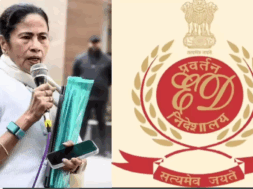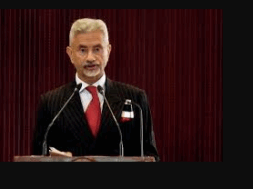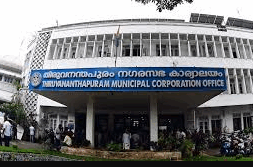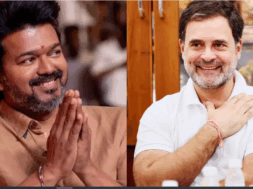
Manas Dasgupta
NEW DELHI, June 16: Even as the controversy is presumed to have been settled after the Supreme Court accepted the Election Commission’s repeated assertions that the Electronic Voting Machines (EVMs) used in India are tamper-proof, the dispute is back in the limelight within a fortnight after the conclusion of the Lok Sabha elections with a remark by one of the top technologists Elon Musk, the owner of microblogging platform “X” and Tesla Chief Executive officer.
Mr Musk has reopened the controversy by suggesting to discontinue polling through the EVMs because of the risks of being hacked. “We should eliminate electronic voting machines. The risk of being hacked by humans or AI, while small, is still too high,” Musk posted.
Elon Musk’s tweet on EVMs was in reply to a post by Robert F Kennedy Jr, nephew of former US President John F Kennedy and independent hopeful for the next US Elections, on polling in poll irregularities in Puerto Rico. There were media reports that Puerto Rico’s elections saw voting irregularities in hundreds of EVMs. “Luckily, there was a paper trail so the problem was identified and vote tallies corrected,” Mr Kennedy Jr said in his post on X.
Mr Musk was referring to the report on software issues with EVMs supplied by the American firm Dominion Voting Systems, which faced a flood of scrutiny in the aftermath of the 2020 presidential elections in the U.S. The company settled a multi-million dollar defamation suit brought by it on Fox News, whose anchors had cast doubts on its voting machines’ integrity. Puerto Rico, a U.S. territory, had been holding primary elections for gubernatorial polls due in November.
Mr Musk’s remarks even had some India connections. His post came amid reports that a relative of Ravindra Waikar, Shiv Sena MP from Mumbai North West, was using a phone that could be connected to an EVM. The reports have fuelled the EVM debate, with Opposition leaders questioning the Election Commission’s “silence.”
While the ECI is still silent on the issue except what it asserted before the Supreme Court just days before the Lok Sabha elections, response to Mr Musk’s apprehensions came from the former union IT minister Rajeev Chandrasekhar who offered to open a tuition school to teach the “X” owner how “tamper-proof” EVMs could be manufactured as done by India.
Mr Chandrasekhar, who was defeated in the elections this time, said Mr Musk’s remark was a “huge sweeping generalization statement that implies no one can build secure digital hardware.” “@elonmusk’s view may apply to US n other places – where they use regular compute platforms to build Internet connected Voting machines. But Indian EVMs are custom designed, secure and isolated from any network or media – No connectivity, no bluetooth, wifi, Internet. ie there is no way in. Factory programmed controllers that cannot be reprogrammed. Electronic voting machines can be architected and built right as India has done. We wud be happy to run a tutorial Elon,” he said.
This drew a short response from Musk, as he doubled down on his point. “Anything can be hacked,” he said. Mr Chandrasekhar agreed but argued that while “anything is possible”, EVMs continue to be a reliable voting method as compared to paper ballots. “Anything is possible, at least in theory. .. With quantum compute, I can decrypt any level of encryption. With lab-level tech and plenty of resources, I can hack any digital hardware/system including the flight controls of a glass cockpit of a jet, etc. But that’s a different type of conversation from EVMs being secure and reliable…”
Jumping into the debate, Opposition leaders shared Elon Musk’s remarks to stress their oft-repeated concerns about the EVM method. Congress leader Rahul Gandhi said EVMs in Indian “are a ‘black box’ and nobody is allowed to scrutinize them.”
“Serious concerns are being raised about transparency in our electoral process. Democracy ends up becoming a sham and prone to fraud when institutions lack accountability,” he said, while sharing Musk’s post and a news report on Ravindra Waikar’s election.
Akhilesh Yadav, Samajwadi Party chief and a Congress ally, shared Musk’s post. “Technology is to remove problems, if they become a cause of problems, their use must be stopped. When risks of EVM tampering are being flagged in several elections across the world and well-known technology experts are flagging risks, the BJP must clear the air on why they are bent on using EVMs,” he said, demanding that upcoming polls be used by ballot paper method.
Rajya Sabha MP and Shiv Sena (Uddhav Balasaheb Thackeray) leader Priyanka Chaturvedi flagged the reports on Mumbai election. “This is a fraud at the highest level and yet the @ECISVEEP continues to sleep,” she said in a post on X. The INDIA Opposition bloc, too, shared Elon Musk’s remarks from its official handle.
The European nations have reverted to the ballot voting system. But the Election Commission of India maintains that the EVMs constitute a viable voting method and robust technical and administrative safeguards are in place for their use. The Chief Election Commissioner Rajiv Kumar recently took a swipe at those questioning EVMs. Addressing the media after the Lok Sabha poll results, he said, “The results of EVM are in front of everyone. Why to accuse that poor fellow? Let it rest for a few days. Let EVM rest till the next election. Then it will come out, then its battery will be changed, then its papers will be changed. Then it will get abused again, but will deliver good results. It has been showing similar results since the last 20-22 elections, the government keeps changing,” he had said.
The Supreme Court has also ruled it can’t dictate the functioning of the Election Commission, a constitutional authority, on the matter of EVMs. The ECI has long maintained India’s EVMs are fool-proof.
First introduced in 2004, electronic voting machines include two units — control and balloting — which are connected by a cable. While the control unit stays with a polling officer, the balloting unit is kept inside the compartment where citizens cast their votes.
In a bid to provide privacy to the voters, the authorities make sure that the balloting unit is covered on all sides. At the time of voting, the polling officer after verifying the identity of the citizens presses the ballot button, which enables them to cast their vote.
The ballot unit carries the names of the candidates and the respective party symbols, along with blue buttons next to them. As per their choices, the voter has to press the blue button of the candidate whom they want to elect. The control unit that stays with the polling officer includes multiple buttons. Of them all, one is titled “ballot” which is pressed to indicate that the control unit is ready to record a single vote. Every time the officer presses this ballot button, a red light titled “busy” is turned on.
In addition, when the green light on the ballot unit is switched on, it signals that the machine is ready for voting. Then the voter goes on to press the blue button next to the name of the candidate of his/her choice. It must be noted that the ballot unit also has a Braille script for visually impaired voters.
After a citizen has cast a vote, the control unit emits a beep sound, indicating that the voting is complete. On top of a control unit, there is one LED screen that shows the total number of votes recorded on it.
Once all votes have been recorded on the control unit, the polling officer presses a button on the side, which seals the unit. A button titled “result” is used on the day of counting to calculate all the votes. Moreover, there is also a “clear” button that can be used to erase all data from the control unit.














